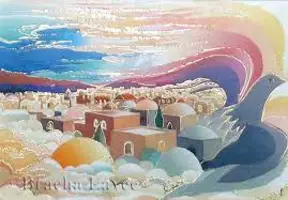WELCOMING SHABBAT
Shabbat is more than a day of refraining from worldly activity.
When experienced to its spiritual fullest, its holiness enlightens all other days of the week.
We invite you to enhance your Shabbat with these words of Torah.

Parashat Va’etchanan- Fully Alive
- Shabbos Chazon, Tishah b'Av, Shabbos Nachamu... A Shabbos of solemnity...before Tisha b'Av, followed by a day of intense mourning... on Tisha b'Av itself, and bookended by a Shabbos of comfort and consolation.
Emor Project » WELCOMING SHABBAT » DEVARIM / DEUTERONOMY » Va'etchanan » Parashat Va’etchanan- Fully Alive
Parashat Va’etchanan- Fully Alive
“Shabbos Chazon, Tishah b’Av, Shabbos Nachamu… A Shabbos of solemnity…before Tisha b’Av, followed by a day of intense mourning… on Tisha b’Av itself, and bookended by a Shabbos of comfort and consolation.
…How can we call the Shabbos after Tisha b’Av, ‘The Shabbos of Comfort’…?
Our Sages… teach that… after a year has passed following [the death of a loved one] the pain and agony of the loss dissipates. Hashem, in His Kindness, ingrained such a phenomenon into our psyche, for He knew that holding onto the loss for too long would overwhelm us.
But what does it mean if, even after a year and certainly beyond the distress and anguish is still there?
…The Torah relates that Yaakov Avinu refused to be comforted after being told that his son Yosef had been torn apart by a wild animal… One can only attain consolation at some point for someone who dies, but not for someone who is alive. [He] remained inconsolable… because Yosef was, in fact, alive.
…The Chassm Sofer [explains that] the very fact that we still remember the Beis Hamikdash to this day and cry and mourn its loss indicates that it is still alive in our hearts and minds… [It] is not eternally destroyed, [not] forgotten…
Shabbos Nachamu is thus a time of comfort for we know with certainty that the rebuilding of Yerushalayim and the Beis Hamikdash is a reality very close to our hearts and fully alive.”
NOTE:
The above excerpts/quotes are provided by Emor precisely as they appear in the original source, without any modifications or corrections to typos. Text within square brackets, as well as subtitles and bold formatting, are added by Emor for emphasis, clarification, or commentary, and the original content has not been changed.
